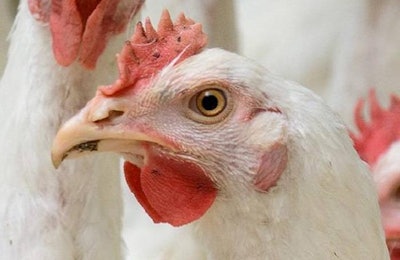
Poultry processors thinking about adopting alternative stunning methods may want to consider another option: low atmosphere pressure stunning.
Dr. Dianna Bourassa, an assistant professor and extension specialist at Auburn University’s poultry science department, said low atmosphere pressure stunning (LAPS) works by steadily decreasing atmospheric pressure until the birds become unconscious. It is approved for use in the U.S., and it is gaining approval in the European Union as well, but it is not widely used. Bourassa spoke on May 10 as part of the U.S. Poultry & Egg Association’s 2018 Poultry Processor Workshop in Orange Beach, Alabama.
How it works
Similar to controlled atmosphere stunning (CAS), LAPS renders the animals unconscious by steadily decreasing air pressure until the loss of consciousness and cessation of the respiratory reflex. The birds are stunned while in the transport cage/coop that is placed in the LAPS module.
Bourassa said the avian respiratory system is designed to still function in low pressure at high altitude, so the birds do not experience any pain. Like CAS, the process takes several minutes and the birds can be hung immediately after leaving the LAPS module.
Advantages of LAPS
Like CAS, the primary benefit of the system is that the birds are unconscious when shackled, which leads to significant ergonomic advantages for the workers and allows for the workspace to be fully lit. LAPS also renders a consistent stun for every bird unlike water bath stunning, which depends on bird variability. Once stunned, broilers cannot and will not regain consciousness.
The system also brings the potential for improved meat quality as well as the potential for minimizing injuries like broken wings and leg bruises. Unlike CAS, there is no recurring gas cost associated with running the system because it does not utilize any gas for the stunning.
Drawbacks of LAPS
Like CAS, the LAPS system is significantly more expensive than the conventional electrical stunning set up and includes a large initial investment to get started as well as a considerably larger footprint than a conventional stunner. Bourassa cited a 2012 study published by the European Commission Directorate General for Health and Consumers that estimated LAPS installation could cost $1.5 million compared with $144,000 for electrical stunning. There is no approved use for halal slaughter. LAPS also requires more time than electrical stunning.
Bourassa said the system is not widely used and she only knows of one that exists in the U.S. That system, she said, is not currently being used, either. While the system is approved for use in the U.S. and pending approval in Europe, the lack of widespread use means there’s not a lot of practical experience working with the system.


















